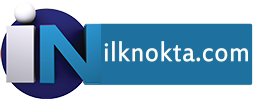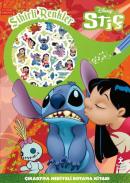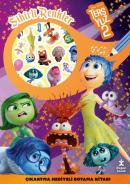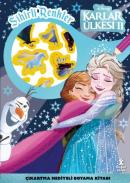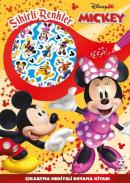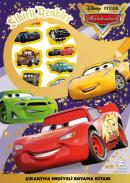
What Is Clean Language? Clean Language was first developed in the 1980s and 90s by psychotherapist David Grove as he sought to find respectful and effective ways to work with trauma victims. The approach he devised was based on a new type of questioning (and listening) that was rooted in honoring the client's language rather than paraphrasing it, reserving advice rather than pushing it, and cleaning up his own communications with respect to assumptions and metaphors. What David Grove learned was that these adjustments allowed his clients to discover and build on the metaphors that were meaningful to them. Once established, they could explore that meaning, experience it in their own ways, learn from it, heal, and move forward. David Grove called his questioning approach Clean Language untainted by assumption or metaphor. Inspired by the effectiveness of David Grove's work, James Lawley and Penny Tompkins studied the approach, eventually codifying it, and then expanding upon it. Now, authors Sullivan and Rees and take this revolutionary way of communicating completely out of the closet, introducing the concepts to the broad range of helping professional (from psychotherapist to organizational coach) as well as interested laypeople. Clean Language (Clean, for short) allows access to the deepest levels of people s communications so that the real issues are revealed early and real helping strategies can be created to meet them. When the client is invited to find the solution, then time isn't wasted in the vain attempts to convince, cajole, or coerce. The basic perspective is straightforward. You should keep your opinions and advice to yourself. You should Listen attentively and ask clean questions to explore metaphors. You should listen to the answers and then ask more Clean questions about they ve said There are just a dozen key Clean questions, and when combined with the words offered by the person being questioned, they become part of a flexible, multipurpose toolkit. The possibility of positive change is just a natural part of the process nobody forcing it, nobody being forced. It s as natural as using clean language.
(Tanıtım Bülteninden)
- Açıklama
What Is Clean Language? Clean Language was first developed in the 1980s and 90s by psychotherapist David Grove as he sought to find respectful and effective ways to work with trauma victims. The approach he devised was based on a new type of questioning (and listening) that was rooted in honoring the client's language rather than paraphrasing it, reserving advice rather than pushing it, and cleaning up his own communications with respect to assumptions and metaphors. What David Grove learned was that these adjustments allowed his clients to discover and build on the metaphors that were meaningful to them. Once established, they could explore that meaning, experience it in their own ways, learn from it, heal, and move forward. David Grove called his questioning approach Clean Language untainted by assumption or metaphor. Inspired by the effectiveness of David Grove's work, James Lawley and Penny Tompkins studied the approach, eventually codifying it, and then expanding upon it. Now, authors Sullivan and Rees and take this revolutionary way of communicating completely out of the closet, introducing the concepts to the broad range of helping professional (from psychotherapist to organizational coach) as well as interested laypeople. Clean Language (Clean, for short) allows access to the deepest levels of people s communications so that the real issues are revealed early and real helping strategies can be created to meet them. When the client is invited to find the solution, then time isn't wasted in the vain attempts to convince, cajole, or coerce. The basic perspective is straightforward. You should keep your opinions and advice to yourself. You should Listen attentively and ask clean questions to explore metaphors. You should listen to the answers and then ask more Clean questions about they ve said There are just a dozen key Clean questions, and when combined with the words offered by the person being questioned, they become part of a flexible, multipurpose toolkit. The possibility of positive change is just a natural part of the process nobody forcing it, nobody being forced. It s as natural as using clean language.
(Tanıtım Bülteninden)
Hamur Tipi:2. HamurStok Kodu:9781845901257Basım Tarihi:2023Kapak Türü:N/ADili:İngilizce
- Yorumlar
- Yorum yazBu kitabı henüz kimse eleştirmemiş.
- Taksit Seçenekleri
- Axess KartlarTaksit SayısıTaksit tutarıGenel ToplamTek Çekim610,70610,702305,35610,703203,57610,704165,90663,595134,84674,216114,37686,24799,91699,37889,28714,27980,40723,621074,23742,311168,28751,101263,36760,32Finansbank KartlarıTaksit SayısıTaksit tutarıGenel ToplamTek Çekim610,70610,702305,35610,703203,57610,704165,90663,595134,84674,216114,37686,24799,91699,37889,28714,27980,40723,621074,23742,311168,28751,101263,36760,32Bonus KartlarTaksit SayısıTaksit tutarıGenel ToplamTek Çekim610,70610,702305,35610,703203,57610,704165,90663,595134,84674,216114,37686,24799,91699,37889,28714,27980,40723,621074,23742,311168,28751,101263,36760,32Maximum KartlarTaksit SayısıTaksit tutarıGenel ToplamTek Çekim610,70610,702305,35610,703203,57610,704165,90663,595134,84674,216114,37686,24799,91699,37889,28714,27980,40723,621074,23742,311168,28751,101263,36760,32World KartlarTaksit SayısıTaksit tutarıGenel ToplamTek Çekim610,70610,702305,35610,703203,57610,704165,90663,595134,84674,216114,37686,24799,91699,37889,28714,27980,40723,621074,23742,311168,28751,101263,36760,32Paraf KartlarTaksit SayısıTaksit tutarıGenel ToplamTek Çekim610,70610,702305,35610,703203,57610,704165,90663,595134,84674,216114,37686,24799,91699,37889,28714,27980,40723,621074,23742,311168,28751,101263,36760,32Diğer KartlarTaksit SayısıTaksit tutarıGenel ToplamTek Çekim610,70610,702305,35610,703203,57610,704165,90663,595134,84674,216114,37686,24799,91699,37889,28714,27980,40723,621074,23742,311168,28751,101263,36760,32
- Yazarın Diğer Kitapları
